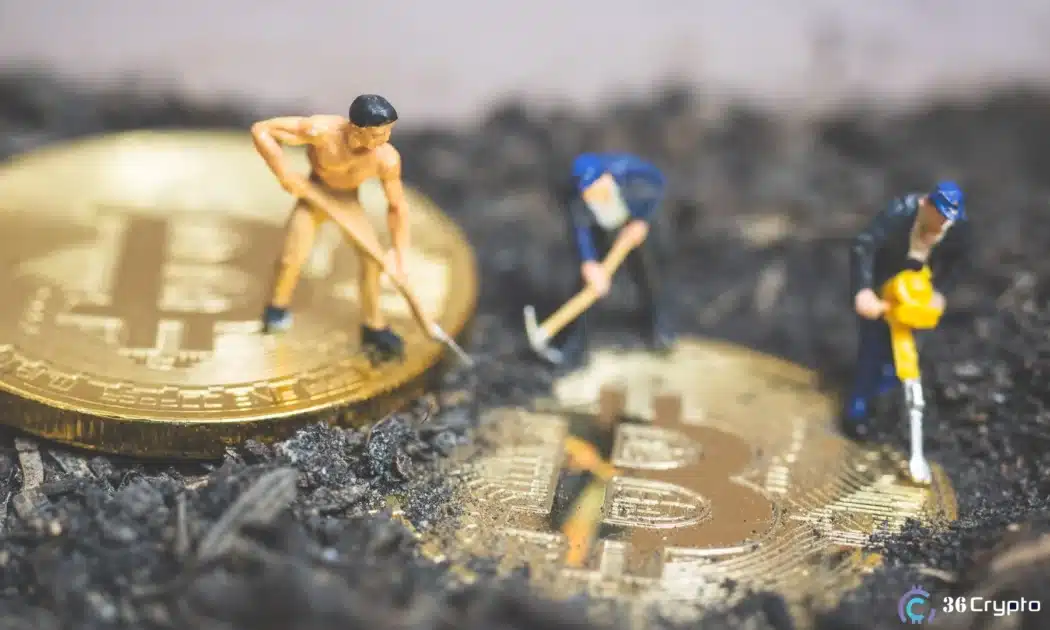As solo mining faces cost and environmental struggles, mining pools enter the stage. Defining the notion of the mining pool and its hallmarks
After Bitcoin halving, mining activity has registered a significant boost, while the network’s hashrate continues to decline and average revenues hit their lows. As mining remains a top crypto income option, the decreased rewards brought efficiency and sustainability to the forefront. And alongside – put mining pools for their showtime.
Below – everything you wanted to know about mining pools and how they facilitate the mining process.
A mining pool is a group of cryptocurrency miners who connect their mining machines over a network to boost their chances of earning the reward for opening a new block. Seeing that mining is an energy-consuming process that requires a fair share of time and computing capacities, its maintenance is also a severe hurdle for income. This forced the community to come up with a more efficient, teaming approach – mining pools.
To find a new block’s hash, participants of the mining pool stream their processing power in convergence. If the pool is successful in these efforts, they receive a reward in the form of the associated cryptocurrencies.
Read Also: Crypto Insights: Highlights and Key Updates from Today’s Market
The rewards are divided between the individuals depending on the proportion of each participant’s processing power contribution. The methods for defining the proportion differ. Among the most popular ones are:
- Pay-Per-Share (PPS) – upon this framework, participants are paid for the shares or blocks they contribute to the pool.
- Full-pay-per-share (FPPS) and Pay-Per-Share-Plus (PPS+) are identical and stand for the following distribution: participants of a mining pool receive a proportional amount of the reward based upon the quality of the shares they provided, and the pool pays a transaction fee reward.
- Pay-Per-Last-N-Shares (PPLNS). When a certain block is discovered, the pool software locates the last blocks participants contributed after the last and new winning blocks were found. The number of trial blocks users discovered between that time determines the payout. This means, if participants disconnect between blocks, they’ll likely lose all the contributions and payouts.
Solo-Mining vs Mining Pools: What to Choose
As mentioned earlier, crypto mining demands immense computational power, significant energy consumption, and substantial time investment to be profitable. These factors together pose challenges to individual mining, particularly in terms of efficiency.
However, what truly makes solo mining difficult is the intense competition. Over the years, the surge in mining’s popularity has brought a flood of powerful participants into the network.
Mining pools have become the sole opportunity for solo or smaller hash-rate miners to compete against the dominance of a few large mining groups. Additionally, mining pools lower the hardware and electricity costs for each participant, thereby improving the chances of covering expenses and making a profit.
What is more, up-to-date mining pools provide participants with extra helpful facilities. Case in point: WhitePool by WhiteBIT, launched just in recent weeks. This FPPS-based pool offers a 0% fee for receiving rewards, 24-hour multilingual support, and special programs for VIP clients, which envisage lowered fees for using the pool.
While pooled mining provides a cost-effective and user-friendly alternative to solo mining, solo mining can be characterized by higher long-term yield and increased rewards over time.
Still, mining pools are gradually edging out individual mining farms, thanks to their superior stability, cost-effectiveness, and energy efficiency. By pooling resources, miners can achieve more consistent and equitable rewards, making pool mining an increasingly attractive option.
As a result, solo mining is becoming viable only for those with substantial financial backing. However, with tightening environmental regulations, the distribution of smaller computational workloads in pool mining might soon become the preferred approach.
Read Also: Brian Armstrong Advocates for Crypto Wallets in AI Models, Unveils Coinbase’s AI Builder Program

